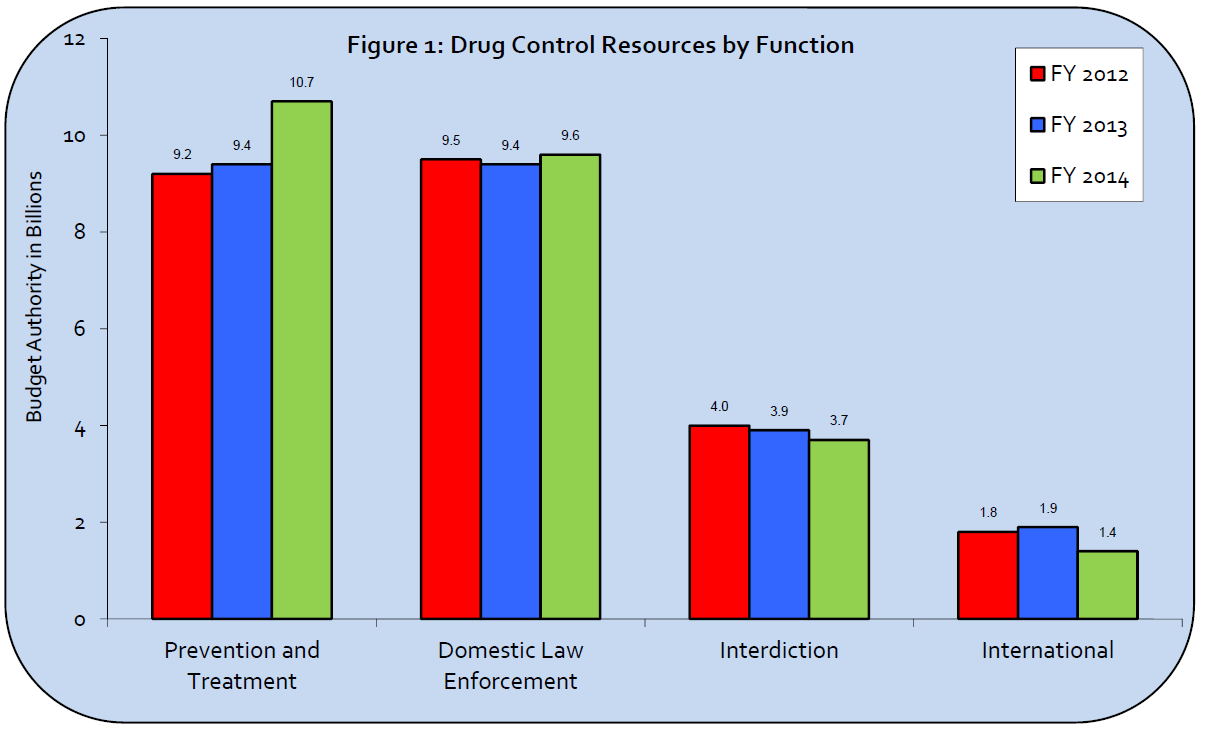What to Watch in U.S. Drug Policy

More on:
Reading through the 2013 National Drug Control Strategy, it is not all that different from recent years past. Drug use remains a serious issue within the United States, with national trends staying fairly steady. Cocaine usage has indeed fallen (from 1 percent of the population to .5 percent), but marijuana usage rose from 6 percent to 7 percent during the same time period—helping to keep the overall monthly drug use levels stable (at over 8 percent of Americans). The biggest changes evident in the Obama administration’s drug policy are rhetorical—defining addiction as a disease, and framing drug use as a public health problem instead of as a moral failing.
But the shift in resources—to match these rhetorical changes—is more limited. As you can see in the chart below, money for prevention has increased by just over 10 percent, but spending on local law enforcement continues apace. The budget allocations are, in fact, not much different from ratios under the Bush administration—and aimed at treatment and rehabilitation (in percent of overall money) even less than 2005 levels.

For real dynamism, you need to look beyond the federal government and its official drug plan to the local and state levels. In 2012 Colorado and Washington voted to legalize recreational marijuana and some sixteen other states and Washington D.C. allow medical marijuana—a number that will surely grow in the coming years. This groundswell may very well spur the national government toward a more fundamental policy shift, as it is forced to grapple with the increasing disparity between the current federal policy and expressed voter wishes.
The other outside change that may directly impact U.S. drug policy is the Affordable Healthcare Act (i.e., Obamacare). In the next year it should provide over 60 million Americans with access to mental disorder and substance abuse benefits. Though not sold as such, this new benefit could indeed transform the resource scorecard within the National Drug Control Strategy, matching up better with the recent rhetoric.
More on:
 Online Store
Online Store